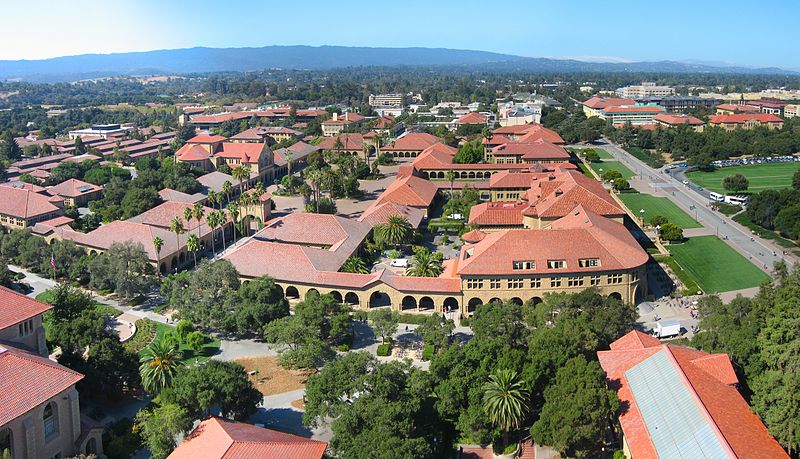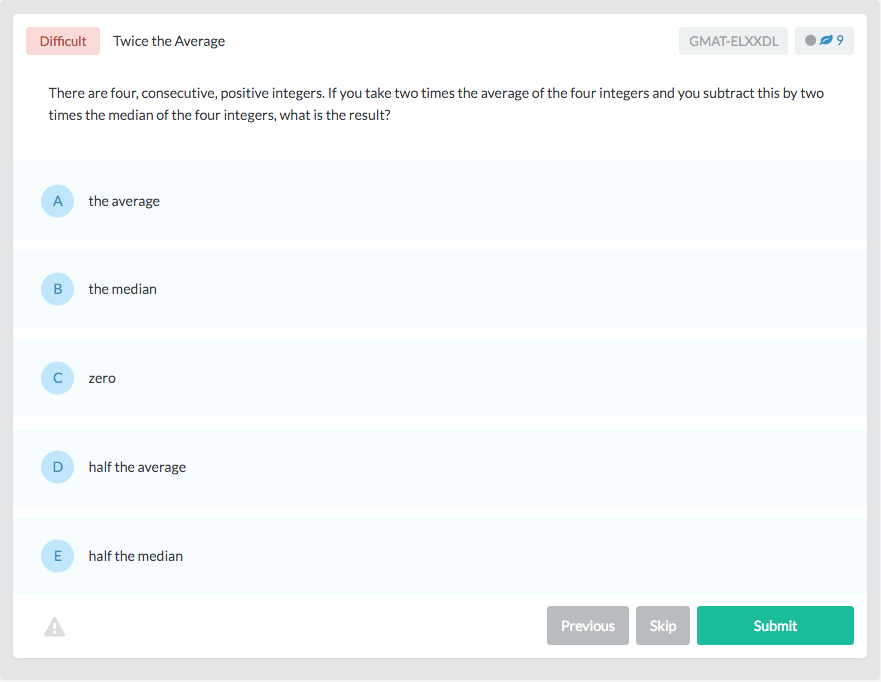Stanford Graduate School of Business is a top choice for any MBA candidate interested in tech or innovation. It has great weather year-round, is an amazing school, and has a stellar program. However, its 400 range class population makes it one of the most competitive MBA programs to get in to. We’ll help you figure out what you need to know about Stanford Graduate School of Business GMAT scores, GPA ranges, GSB class of 2016 profile (and 2017 profile), and other statistics you should keep in mind about GSB admissions before applying.
Before you apply to any school, there are certain things you should research. We’ve got you covered with an overview of Stanford GSB, a deep dive into their statistics, and insider tips and guides to help you formulate your application strategy. Remember that everything in your application should be intentional. To apply to any school, you need to understand the school–to show the admissions office that you are a perfect fit for the program. We’ve got your back on those Stanford GMAT score ranges and other hard facts that you need to know to get started.

Image Source: Wikimedia Common
Stanford Graduate School of Business School Overview
Stanford Graduate School of Business was established in 1925 as part of a private university and is considered the best business school (#1 ranking) in the 2016 US News & World Report rankings. It is one of the smaller business programs, with about 400 students per class (around 800 in the full-time program). The campus is located on the main Stanford campus in Palo Alto. However, some of their executive education and Stanford Ignite programs are offered in other campus locations, including Bangalore, Beijing, London, New York City, Santiago, and São Paulo. Stanford, due to its location and its university, is known for being very closely linked to the cutting edge of technology, innovation, and start-up culture. Stanford Graduate School of Business has four main programs, full-time MBA, MSx, Ph.D., and an Executive Education track. Each of the programs are very different so make sure to read up on their site to apply to which journey is the best for you. The variance in programs demonstrates the diverse ecosystem at Stanford. Each program is relatively small, but there is considerable overlap between the programs. Stanford offers many dual degrees and joint degree programs: JD/MBA, MA Education/MBA, MPP/MBA, MS in Computer Science/MBA, MS Environment & Resources/MBA and an MD/MBA.
The alumni body is scattered all over the world, with 27% of the body in the Bay area, 41% in other parts of the US, and 23.7% in international locations.
Stanford Graduate School of Business GMAT Scores
The Stanford Graduate School of Business GMAT Scores range is 570-800. The average is a 733. Notice that the range is very large. Even with a perfect score, you will not be guaranteed entry into this prestigious business school. The range is 570-800 but keep in mind that the average and also the median score is 733 for the most recent incoming class. The Stanford GMAT score range should emphasize that although you want to do the best you can on the GMAT because it is an important factor in your application, not breaking a 700 won’t be the end of the world.
Stanford Graduate School of Business Average GPA
In the same vein, the average undergraduate GPA for Stanford’s MBA class of 2017 students 3.75. Again, this threshold should not be thought of strictly. By exceeding 3.75 won’t guarantee acceptance, neither will a GPA below 3.75 cause you to be automatically rejected.
Stanford Graduate School of Business Class of 2017 Profile
One of the best ways to know what a school’s expectations areis to take a look at the people that it has admitted recently. We’ve pulled information on the Class of 2017 so that you can get a better understanding of what the class make-up looks like. Numbers fluctuate slights from year to year but from this overview, you should be able to put together a good picture of what a typical Stanford Graduate School of Business class looks like.
At a glance |
|
| Total Applicants | 7,899 |
| New Students | 407 |
| Women | 40% |
| International Students | 40% |
| US Minority | 19% |
| Years of work experience range | 0-17 |
| Average years of work experience | 4 |
| Total Enrollment | 825 |
| TOEFL Range | 100-120 |
| TOEFL Average | 112 |
| Advanced degree holders | 13% |
Schools and Countries |
|
| US Institutions | 90 |
| Non-US Institutions | 75 |
| Countries (including the US) | 53 |
Undergraduate Majors |
|
| Business | 13% |
| Engineering, Math or Natural Sciences | 39% |
| Humanities or Social Sciences | 48% |
| Median Base Salary | Not yet available |
Previous Industry Experience |
|
| Biotech/Health Care/Consumer Products and Services | 7% |
| Clean Tech, Energy, or Environmental | 5% |
| Consulting | 16% |
| Entertainment or Media | 6% |
| Financial Services | 8% |
| Government/Education/Nonprofit | 13% |
| Manufacturing | 4% |
| Military | 3% |
| Private Equity/Venture Capital | 16% |
| Real Estate | 3% |
| Technology | 15% |
| Other | 4% |
| Organizations Represented | 296 |
Stanford Graduate School of Business Class of 2016 Profile
Stanford Graduate School of Business Statistics
1. Admissions: Acceptance rate is about 5%
2. Financials: Tuition is $64,050 per year. And around 77% of MBAs receive financial aid.
3. Job offers: 92% of job seekers in the MBA Class of 2015 received job offers within 90 days of graduation
- 31% of the student body went into finance
- 28% of the student body went into technology
- 14% of the student body went into consulting
- 6% of the student body went into healthcare
- 7% of the student body went into consumer products
- 6% of the student body went into nonprofit/government
4. Entrepreneurship
- 60% of entrepreneurs stayed in the west coast
- 28% of entrepreneurs went outside of the US
- Top three industries for entrepreneurs were: consumer products and services-14%; healthcare-10%, and finance-9%
What does the GSB admissions office say?
The admissions office stresses that there are no thresholds, no quotas, no targets, no numbers they need to maintain to report out. They emphasize that they look at the complete package (your application) to assess how much of a fit each student is for the school. This indicates that you need to build the strongest application you can with what you have. Stanford looks for well-rounded individuals. Just because you were top of your undergraduate class or wrote an amazing essay will not secure a coveted spot in the next MBA class. You need to make sure your application is putting the best foot forward and showing what a rock star candidate you are.
Some recommendations
1. Visit Stanford if you can and/or sign up for as many presentations, webinars, and networking events as you can with the school and the admissions office. Make sure you are showing the school that you are extremely interested in attending and eager to learn more about the school. There are a lot of on-the-road presentations so opt into their email subscriptions to get a heads up when they are heading your way.
2. Interviews are usually given to about 1,000 applicants and are done by invitation only. By a certain date (usually less than a month before decisions are set to be released for the round), you will be notified that if you haven’t received an invitation to interview by that date, you are released from the school (an early rejection). This will happen to the majority of the applicants for that round so don’t get discouraged. Interviews are conducted by alum in your area; the admissions office will coordinate the details.
3. Once you’ve received the interview invite, give yourself a pat on the back and then continue your research on the school, especially its community. Stanford values its strong, diverse, and tight-knit community so play up that quality. Read through the student blogs and listen to the students and admissions officers at their roadshows to learn more about student life so that you can paint a picture of how you fit into that ecosystem.
Things to keep in mind about Stanford Graduate School of Business
1. Stanford’s largest fields are finance, technology, and entrepreneurship (not mutually exclusive). Try to connect your interests and goals with some of Stanford’s biggest strengths
2. Stanford values diversity and being global. Try to play up any international experience or working with cross-cultural teams.
3. Stanford’s admissions office wants to know about you and who you are. In the application, they will ask you some personal, fun questions like “what is your favorite food” and “what is your favorite word in any language.” Make sure you are putting in some thought into this answer. The admissions office wants to know a little about you beyond just a standard application so be genuine and have fun with it!

Image Source: Wikimedia Commons
Stanford Graduate School of Business is the leading business school in the innovation, entrepreneurship, and technology fields. The biggest priority of the admissions office is fit so leverage our guide and our tips to position yourself as best you can for Stanford GSB admissions. You now know the stats, the Stanford Graduate School of Business GMAT scores, the GSB class of 2016 profile, the advice from the admissions office, etc.; now leverage this information to create a rock-star application!
Try this GMAT practice question:

Looking for more GMAT practice?
You can find thousands of practice questions on Albert.io. Albert.io lets you customize your learning experience to target practice where you need the most help. We’ll give you challenging practice questions to help you achieve mastery of the GMAT.
Start practicing here.







